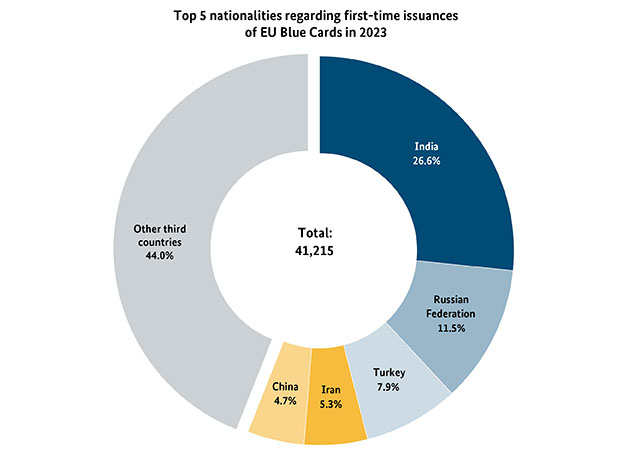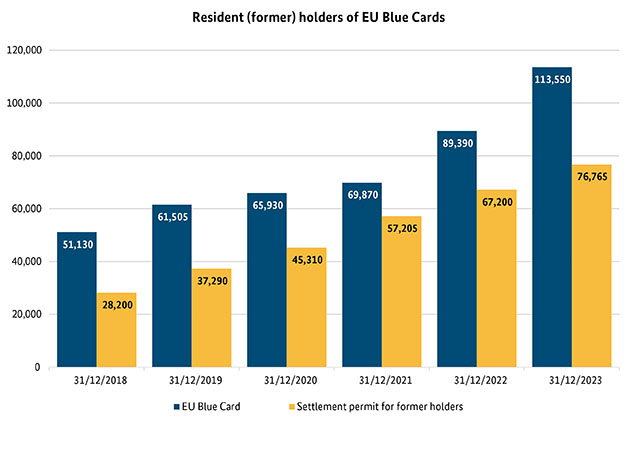Figures on the EU Blue Card ,
This content is also available in
The implementation of the EU Blue Card in 2012 made it considerably easier for highly-qualified skilled workers from third countries to immigrate to Germany. Its legal foundation is provided by section 18g of the Residence Act (Aufenthaltsgesetz – AufenthG). The new Skilled Immigration Act (Gesetz zur Weiterentwicklung der Fachkräfteeinwanderung), introduced in 2023, further expanded the regulations regarding the EU Blue Card. It therefore remains of central importance for labour migration to Germany.
A total of more than 41,000 EU Blue Cards were issued for the first time in 2023 (i.e. not including extensions). Somewhat fewer than half of their holders had already been issued with another residence title in Germany, for example as students. Most of the others were new immigrants to Germany. The number of first-time issuances of the EU Blue Card rose by 5 percent in comparison to 2022.
 Source: Central Register of Foreigners
Source: Central Register of Foreigners
To which nationalities are EU Blue Cards being issued?
More than one-quarter of all EU Blue Cards were issued to Indian nationals in 2023, who therefore led the field by far in terms of being the largest nationality group. They were followed by nationals from the Russian Federation, Turkey, Iran and China.
 Source: Central Register of Foreigners
Source: Central Register of Foreigners
How has the number of EU Blue Card holders developed in recent years?
Roughly 113,500 holders of an EU Blue Card were living in Germany as per the end of 2023, this being more than twice as many as in 2018. At the same time, the number of former EU Blue Card holders who subsequently received a corresponding settlement permit (in accordance with section 18c subs. 2 of the Residence Act) increased almost threefold during this period.
 Source: Central Register of Foreigners
Source: Central Register of Foreigners
Where do the figures come from?
The above figures on the EU Blue Card in Germany come from an evaluation of the Central Register of Foreigners (Ausländerzentralregister – AZR).
You will find further information and statistics on the topic of labour migration in general, and on the EU Blue Card in particular, in the report "Educational and Labour Migration Monitoring", or on the page containing general information on the EU Blue Card (s. links at "further information").
